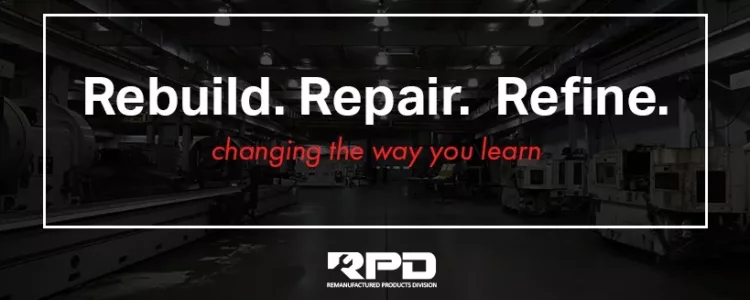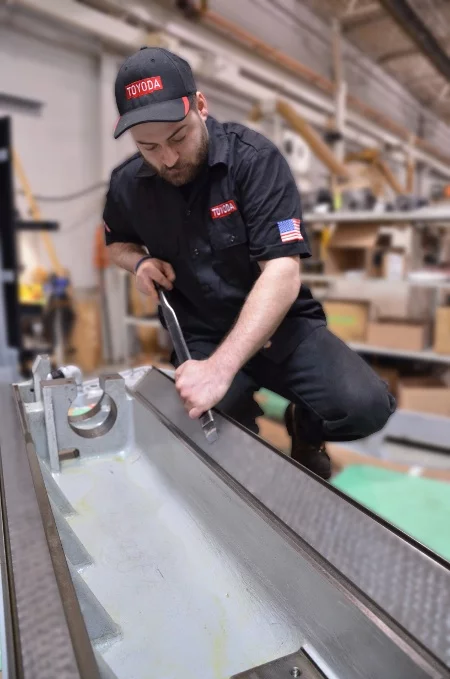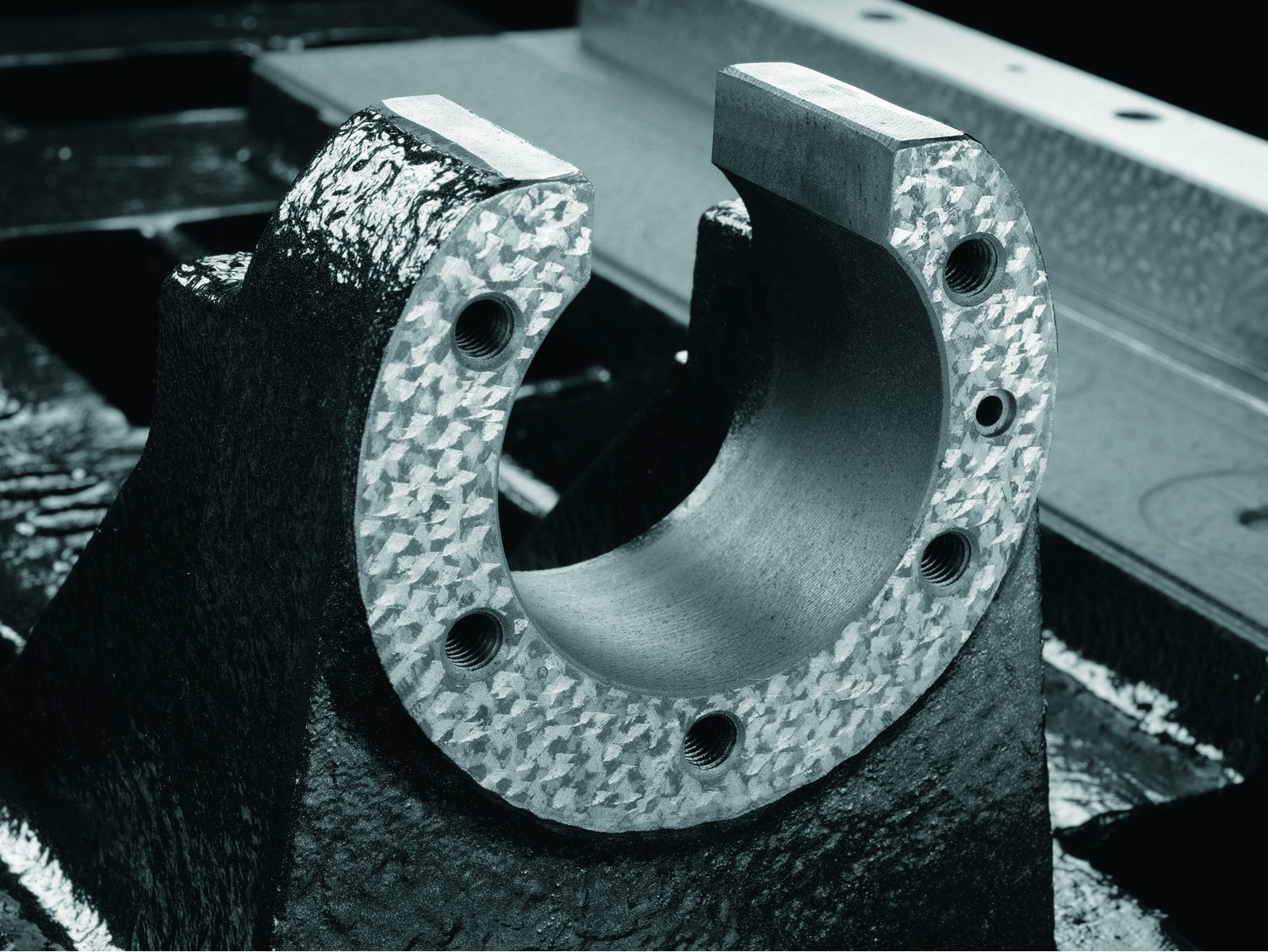JTEKT Machinery at PMTS 2025
Precision Machining Technology Show April1 -3, 2025 | Cleveland, Ohio Exhibit Halls A-C Booth #7076 Please Join Us at PMTS 2025. …


When it comes to machine basics, most shop owners view hand-scraping as a machine maintenance no-brainer. However, the meticulous level of craftsmanship and attention to detail needed to properly scrape a machine, the difficult-to-find skilled labor, and high-costs attributed to scraping have some machine owners questioning its necessity and more importantly, its true impact to their bottom dollar.
What is it?
Traditional hand-scraping is a meticulously manual technique where a highly skilled & experienced craftsman uses their body weight against a carbide hand scarper to remove very small amounts of metal and create thousands of textured patterned divots along finishing slide guide mating components.
What is its purpose?
When it comes to stability, one would assume that the flatter the surface, the more stable the process. Well, when it comes CNC manufacturing, one couldn’t be farther from the truth. With two perfectly flat surfaces – lubrication is pressed out leading to mating components that are prone to sticking. By creating unfavorable friction between the surfaces, manufacturers are left with machining discrepancies and end-product inconsistencies.
With hand-scraping, mating surfaces smoothly glide against each other, rather than stick, thanks to the thousands of high and low spots creating oil pockets. Ideally, true machine flatness consists of twenty five contact points per square inch, aligning components within .0001 of an inch - reinforcing stability, providing better balance, and giving the machine tighter alignments and tolerances.
What’s the impact on my machine?
Machines that are hand-scraped benefit from a number of improvements including:
Ultimately, hand-scraped surfaces pave the way for a harmoniously balanced machine with significantly less wear and tear, creating parts with superior surface finish – allowing your machine to last longer while giving the best return on your investment.

Man vs. Machine
So, if man can do it, machine can replicate, right? Best answer – there is no substitution when it comes to hand scraping. Although some OEMs machine textured divots into their surfaces, automated processes cannot reliably match the geometric patterns of hand-scarping. In addition to requiring significantly more time to complete, mechanically scraped surfaces are prone to irregularities that can lead to material distortion. There is no better method that is more ideally suited to reinforcing machine balance than hand-scraping.
Want to learn more? RPD’s full time scrapers offer almost 50 years of experience - having the knowledge and skills to help. Reach out to our RPD team today! We look forward to maximizing your business.